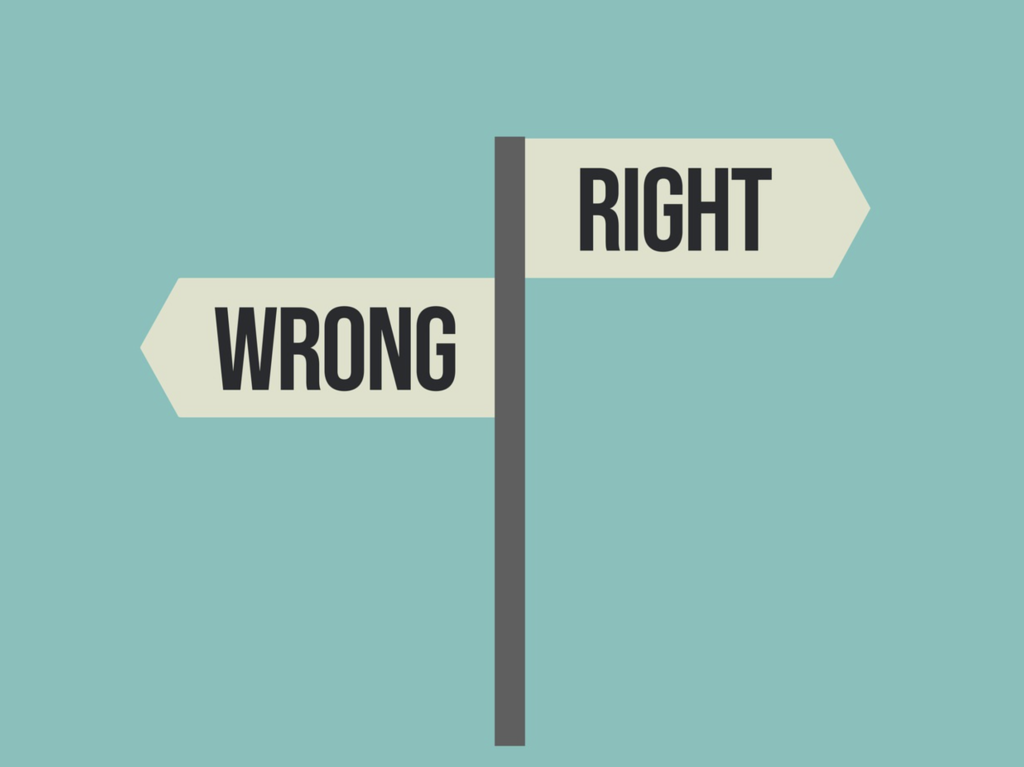If you’ve ever Googled “quantitative versus qualitative research,” you’ve surely found that the academic blogosphere abounds with comparisons of these two research methods—and our blog is no exception! It’s little wonder that this is such a common topic of discussion, as choosing between these two major methodological pathways is one of the more important decisions you’ll make as you embark on your dissertation adventure. To make this choice, it helps enormously to understand the fundamental differences between these methods.
In order to make a compelling rationale statement for your choice of method, you need to have a good grasp of the strengths and applications of quantitative versus qualitative research methods. But this article isn’t really about the deeper questions of rationale—if you’re interested, you can check out our previous comparison of quantitative and qualitative methods and also our discussion of common reasons for choosing a qualitative research approach. In this article, however, we’ll be talking about the more practical questions related to dissertation research methodology to help you evaluate which approach you’re best equipped to handle, given your skills and resources.

Such practical matters are important to think over because your dissertation purpose could be the most inspired in the world, but if you’re not prepared to carry it out procedurally, you’ll end up mired down in proposal revisions as you switch from quantitative to qualitative research, or the other way around. Having supported countless dissertation consulting clients through methods changes, we can assure you that this is as nightmarish as it sounds—especially if you get all the way through your dissertation proposal before realizing that you need to change your methods! In the interest of promoting more efficient (and less stressful!) progress through your proposal, we’re happy to share some insights on practical matters to think about when choosing your research method.
Sampling
A big difference between quantitative and qualitative research relates to sampling. Doctoral candidates often find it easier to recruit the smaller samples required for qualitative studies than the larger ones you need to sufficiently power statistical analysis in quantitative studies. For most of our dissertation assistance clients who are conducting qualitative studies, samples of 10 to 20 participants are the norm. So, it is usually fairly quick and easy to recruit this number of people through pathways like professional networks or associations, clubs, or churches.
Another practical consideration for qualitative studies is the need to gather a purposive sample, or in other words, a group of people who all share key backgrounds, attributes, or experiences (Petty et al., 2012). In most cases, this isn’t too tough. Many doctoral candidates focus on populations or settings that they are well acquainted with when completing their dissertations, which definitely helps when it comes to recruiting participants. For example, many of our dissertation consulting clients are educators, and for them, recruiting a sufficient number of school administrators or fellow educators isn’t too difficult.

In some cases, however, purposive sampling can be somewhat challenging. In particular, if members of your target population are rare or geographically dispersed, it might be difficult to get in touch with a sufficient number of people with the specific attributes you’re looking for. This doesn’t mean that it’s impossible, but it will probably mean that you will need to invest more time, energy, and creativity into locating eligible individuals. Most of our dissertation consulting clients are busy, working adult students, who quite reasonably just want to get through their dissertations as efficiently as possible. If you’re in this boat as well, you’ll definitely want to think twice about shaping a qualitative dissertation around a rare or hard-to-find population.
In a different vein, if you’re thinking about using a quantitative method, you should keep in mind that you will need to gather a larger sample. Our statistical consulting clients typically require anywhere from 30 to 100 participants for their dissertations. So, it will help to plan ahead to make sure that you have sufficient time for gathering a large enough sample. It will also likely mean that you will need to recruit through online platforms. Our statistical consultants can offer assistance with recruiting strategies for quantitative studies if this proves to be a stumbling block for you.
Sampling Differences at a Glance
Qualitative Research:
- Smaller samples
- Usually 10-20 participants
- Purposive sampling, participants should all have certain qualities or background
Quantitative Research:
- Larger samples, 30+ participants
- May need to recruit online to locate a sufficient number of participants
- May take longer to gather sample of sufficient size

Data Collection
Another important area of procedural difference between quantitative and qualitative research concerns data collection. Among our dissertation assistance clients who are conducting qualitative studies, almost all of them use interviews as a primary form of data. Although the prospect of interviewing a handful of participants may not sound too involved, it is actually pretty easy to go off track—especially if you love to socialize and tend to get lost in conversations.
Although there is a conversational element to a good interview, conducting interviews for purposes of qualitative research requires a systematic approach. This is because following specific procedures helps you to obtain data for your dissertation that is rich, detailed, aligned with your research questions, and free from bias. For example, using open-ended questions elicits richer responses than closed-choice questions, and it is important in semi-structured interviews to recognize when to insert a “probe question” to draw out more information from a participant (Jacob & Furgerson, 2012).
When conducting interviews for qualitative research, it is also very important to restrain your own responses to participants, even when you feel very strongly about what they are sharing. This is because communicating agreement or disagreement can influence participants’ responses (which you don’t want to do). Although it is certainly OK to empathize or use reflective listening, you want your stance to remain neutral so that you don’t cue participants to respond in any particular way.
The same types of considerations apply if you’re thinking about doing focus groups or observations for your qualitative study. The last thing you want to do is artificially skew what people say or do—that pretty much invalidates your findings. Because you are so closely involved with participants at the time of data collection in qualitative research, it is that much easier for you to inadvertently bias the data. So, if you’re leaning toward a qualitative research method for your dissertation, it is important to do an honest self-assessment to make sure you have the necessary interviewing skills.
With quantitative research, you as the researcher are much less likely to unduly influence participants to respond in any particular way. This is because quantitative data collection is often completed remotely (e.g., using online platforms. Rather than the potential for biased responses, a possible hitch it will help to consider for a quantitative dissertation is the need to use previously validated instruments.
Although you won’t need to describe your survey instruments and all of their oh-so-fascinating psychometric properties until you write your methods chapter, it is important to have specific instruments in mind right from the beginning of your topic development. This is because the problem, purpose, and research questions that you develop in your prospectus or introduction chapter must align with the data collection and statistical analysis plan you eventually describe in your methods chapter.

We have worked with dissertation consulting clients who came to us in desperation after writing their proposals, only to find that their intended variables did not have validated instruments available anywhere. The horrifying end to this tale is that they had to rewrite most of their proposals around new variables that did have existing instruments. This is because creating and validating new quantitative survey instruments is a hugely involved project that requires sophisticated statistical analysis skills that most doctoral candidates do not possess (not to mention that most dissertation committees don’t permit candidates to develop their own surveys anyway). So, the take-home message here: Identify possible options for validated instruments while developing your quantitative research topic. It will save you tons of time in the long run.
Data Collection Differences at a Glance
Qualitative Research:
- Often in-person forms of data collection
- Risk of biasing data due to researcher presence or response to participants
- Should have formal training in interviewing for purposes of qualitative research
Quantitative Research:
- Make sure that problem, purpose, and research questions align with variables from validated instruments
- Best to identify pertinent instruments during topic development of your study
Data Analysis
A fairly obvious difference between studies that use qualitative research methods and those that use quantitative methods relates to data analysis. This is because quantitative datasets are numerical, and qualitative datasets are language-based. While we won’t go deep into the differences between statistical analysis and qualitative analysis here, we will point out a couple of important practical differences to keep in mind as you’re choosing your method.
A big one to recognize is the difference in the amount of time required for quantitative versus qualitative analysis. Most of our dissertation consulting clients end up with anywhere from 10 to 20 hours of audio recorded interviews, and in order to conduct the analysis properly, these interview recordings need to be transcribed verbatim. When you take into account the fact that 1 hour of audio equals about 4 hours of transcription time, that means that you’re looking at 40 to 80 hours just for transcription. To deal with this headache, many doctoral candidates outsource their transcription, but whether you plan to task this out or do it yourself, it’s still important to consider when you’re deciding whether a qualitative research method is right for you.

Another practical difference between qualitative and quantitative methods is the analysis software and how it functions. When using statistical analysis software, such as SPSS or R, you are able to select specific statistical tests to apply to your dataset, and then you just let the software do the rest. The analysis process is quick and easy, provided that you know what to make of the test statistics and p-values once you have these results (if you don’t, our dissertation consultants are always here to help).
With qualitative analysis software like NVivo or MAXQDA, however, the analysis process is a bit more labor-intensive (Burnard et al., 2008). After you import your transcripts into the software, it is not possible to simply select “Thematic Analysis” and set the software loose. While statistical analysis processes follow established mathematical steps that software can handle, the steps in qualitative analysis require a level of interpretive sophistication and judgment that software cannot handle (at least not currently—check back in 10 years!).
This is an important difference to understand when selecting your research method, as qualitative analysis is a complex and time-consuming process. Most who choose this path feel that the texture and impact of qualitative findings make it worth the effort. But, the required time investment and analysis know-how make this a vital point to think about early on in your dissertation. Keep in mind that you can always seek out qualitative dissertation assistance to make sure you get through the analysis phase of your study successfully.
Data Analysis Differences at a Glance
Qualitative Research:
- Must transcribe interviews before importing into analysis software
- Requires about 4 hours of transcription time for each hour of audio
- Qualitative analysis software does not automatically generate results
Quantitative Research:
- Can download datasets from online platforms and import into statistical analysis software
- Software generates analysis results

Ethical Considerations
A final area deserving of attention in this comparison of quantitative and qualitative research procedures is research ethics. In a previous section, we went over the differences between data collection techniques between these two methods, and what you probably noticed was that qualitative research tends to involve your own in-person presence and interaction to collect data. For quantitative studies, however, it is pretty uncommon for you as the researcher to be up close and personal with your participants during data collection. In many cases, our dissertation assistance clients administer their quantitative surveys using online platforms, so they never have any contact at all with their participants.
This difference ties in with research ethics because your interactions with participants during qualitative research—and even your mere physical presence—can influence the data. Subtle social pressures can influence participants to respond to interview questions or behave during observations in ways that they feel are socially desirable. As you might imagine, participants tend to feel much more comfortable being honest when their data is totally anonymous, as with an online survey. Interviews and observations involve an element of personal interaction, though, which makes it important for you to project as neutral a presence as possible.
Another consideration is that if you have pre-existing relationships with participants, this has the potential to raise eyebrows with your IRB. For example, if you are in an influential or authoritative role in relation to participants, this can call into question whether their consent to participate was truly voluntary. In other words, it creates the possibility for coercion. This is because such individuals might agree to participate because they feel an unspoken pressure to do so. This is a bad situation, ethically, as it violates the basic terms of the Belmont Report.
To resolve this type of ethical issue with your dissertation, it will help to recruit from pools of people you don’t have any type of relationship with. If you’re planning to use qualitative research and analysis, it’s a good idea to plan your topic with this ethical consideration in mind. For that matter, even with quantitative methods, you’ll want to make sure that you aren’t developing a plan that will hinge upon using participants who have a subordinate relationship with you.

For example, let’s say that you’re the CEO of a small company, and you want to survey all of your employees about the leadership quality at your firm. Even though your participants would be completing surveys anonymously, there is still a risk of coercion to participate. There is also the risk that they might respond in ways that make you happy, in order to avoid retaliation. So, regardless of method, our dissertation consultants strongly recommend that you do not plan to use people under your supervision as your research participants.
Ethical Consideration Differences at a Glance
Qualitative Research:
- In-person nature of data collection can increase risk of biased responses from participants
- Risk of coercion is present if you have position of influence or authority with participants
Quantitative Research:
- Remote, online data collection reduces risk of biased responses
- Still important to avoid recruiting subordinates such as employees, due to risk of coercion and bias
Conclusion
When deciding whether to use a quantitative or qualitative research method for your dissertation, it will help to think over practical considerations in addition to questions of suitability of each method to your topic. Planning a dissertation can be a tough chore because you need to think through steps like sampling, data collection, and data analysis many months before you will actually complete these steps. Complicating this decision is the fact that most doctoral candidates have never conducted an empirical study before—it’s hard to plan ahead for research steps you’ve never taken before. This is where professional dissertation assistance can really help out! We’ve been there before and are happy to offer our experience to ensure that you have as smooth a journey as possible. We hope this article has been helpful as you weigh your methodological options, and feel welcome to reach out for guidance from our expert methodologists any time!
References
Burnard, P., Gill, P., Stewart, K., Treasure, E., & Chadwick, B. (2008). Analysing and presenting qualitative data. British Dental Journal, 204(8), 429-432. https://doi.org/10.1038/sj.bdj.2008.292
Jacob, S. A., & Furgerson, S. P. (2012). Writing interview protocols and conducting interviews: Tips for students new to the field of qualitative research. The Qualitative Report, 17(42), 1-10. http://nsuworks.nova.edu/
Petty, N. J., Thomson, O. P., & Stew, G. (2012). Ready for a paradigm shift? Part 2: Introducing qualitative research methodologies and methods. Manual Therapy, 17, 378-384. https://doi.org/10.1016/j.math.2012.03.004